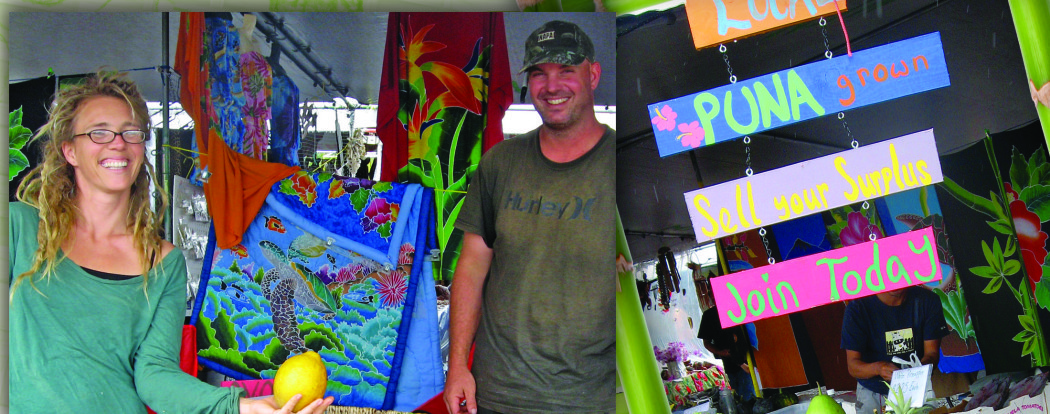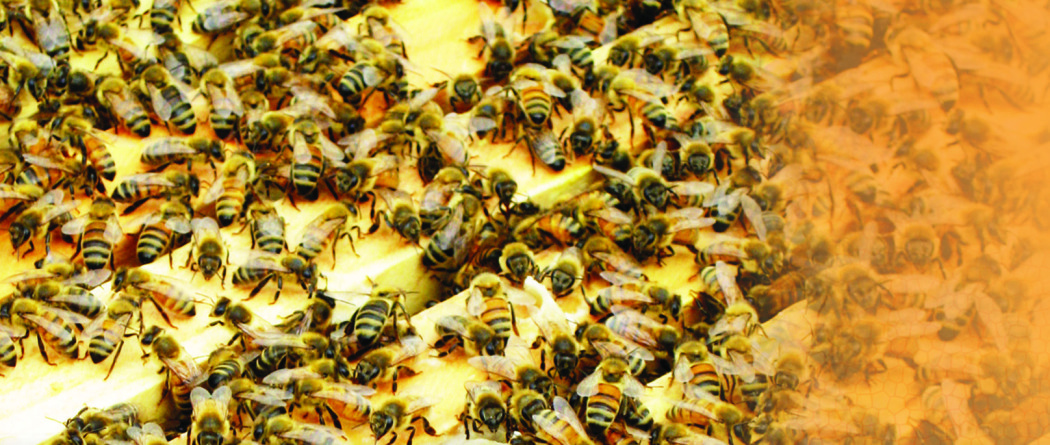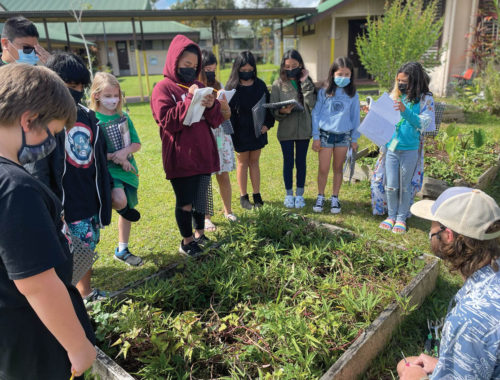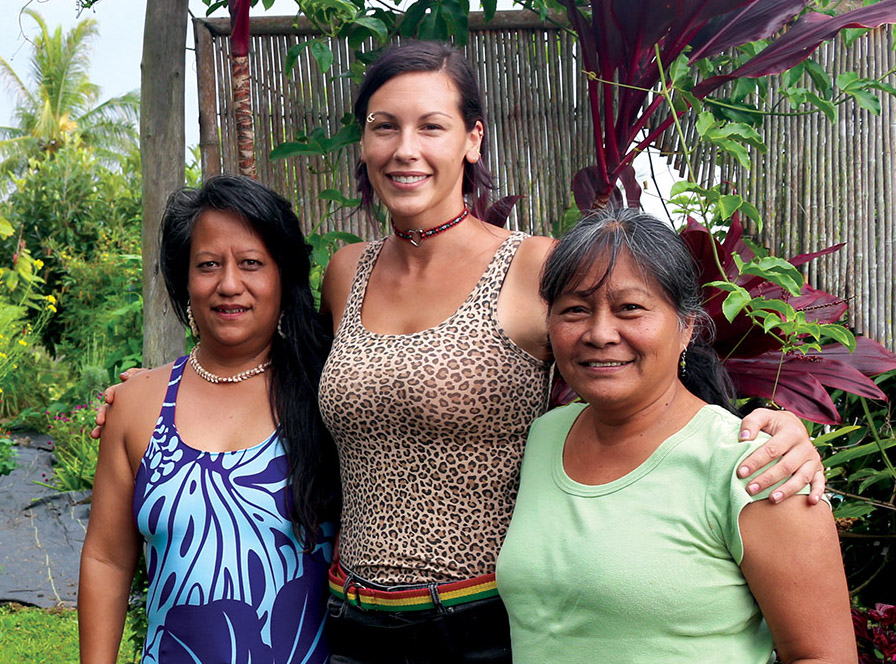
Money Does Grow on Trees: Puna Programs Help Backyard Farmers Sell Excess Produce
 By Denise Laitinen
By Denise Laitinen
When I was a kid my dad would say, “Money doesn’t grow on trees!” Well, it turns out Dad was wrong. Thanks to the efforts of two separate food co-op programs in Puna, people are tapping into a better exchange than money (in the form of produce) and it’s growing right in their backyards.
Perhaps you have avocado or banana trees or tomato plants in your yard. You have more produce than your family needs but not quite enough to become a farmer and set up shop at the local farmers market. In the old days, families would share their bounty with family and neighbors, and while that still happens, there is also a vast amount of produce going to waste in people’s yards.
And yet at the same time there is a tremendous need for food on our island, with reports that one out of every six island residents are food unstable, meaning they don’t know where their next meal is coming from.
“We see fruit rotting on the ground all the time,” says Mary Jennings co-founder of the Maku’u Backyard Growers Co-op. Mary and her husband Sean, who live in Orchidland, started the co-op about six months ago after noticing “we have a surplus in one area and at the same time have great need in so many areas of the Big Island.”
The concept is simple. People in lower Puna (Kea‘au, Orchidland, Pahoa, etc.) bring their excess produce, on consignment, to one of two drop-off sites on Saturdays between 4 and 4:30 p.m., either at the Orchidland General Store or the Hawaiian Paradise Park Community Center. The fruit is sold the next day, on Sundays, at the Maku‘u Farmers Market.
“We pick up the fruit and veggies the day before market and bring it to the market the next day,” says Mary. “Right now we have these two pick-up locations because it’s convenient for area residents, but we plan to expand to other locations as the program gets bigger,” explains Mary.
Growers in the program aren’t necessarily farmers, they’re more likely folks that just happen to have extra fruit trees in their yard. “We’re looking for ‘mom and pop’ type folks,” says Mary. “Someone who has avocadoes over here, a bucket of oranges there, and by everyone pooling their resources we’ll have a tremendous variety,” says Mary.
The Jennings sell the produce at the market and whatever is left is either picked up by the grower or donated to the Hawai‘i Island Food Basket.
The grower determines the price of their produce. If someone is unfamiliar with what price point to charge for their produce, Mary and Sean will offer suggestions, but ultimately the decision is up to the grower.
“The grower keeps 75 percent of the sales of their produce (less minimal costs, which are based on the percentage of the grower’s total sales), so it’s a pretty good deal for people picking fruit off trees in their backyard,” says Mary. The other 25 percent covers the Jennings’ time and expenses.
“We tally sales at the end of the market and mail each grower a check for their sales or they can pick up their check at the next week’s drop-off location,” explains Mary. “We’re as open and transparent as possible.” Mary notes that if your produce doesn’t sell, no one loses. “We don’t buy the food from you; we sell it for you.”
Backyard growers interested in selling produce don’t necessarily need to do anything special to their produce to get it ready for market, but Sean says they do ask people to be as organic as possible. The Jennings meet with prospective growers and check out the grower’s yard, looking for things like fire ants. They’ll also offer tips on growing food.
“I’d love everyone who has surplus food to get involved,” adds Sean. “Our goal is to have a co-op near every farmers market on island,” says Mary.
The benefits of such a food co-op are multi-fold. Certainly, there are the financial rewards for the growers selling excess produce. It also helps to increase food self-sufficiency.
Increasing food self-sufficiency is critical on an island as geographically remote as ours. Indeed, a 2007 study conducted by the Rocky Mountain Institute estimates that 85 percent of the food consumed on the Big Island is imported. A natural disaster, such as tsunami or earthquake (both of which have occurred in recent years), or a disruption to the transportation industry would severely impact the availability of food.
Mary and Sean are doing what they can to increase people’s awareness of purchasing local produce.
“We want to bring really local produce to the Maku’u Farmers Market and make it clear to people where their produce is coming from,” says Mary.
Mary and Sean grow a lot of their own food, from peas to basil to tomatoes and gourds. They got the idea for a food co-op from Catarina Zaragoza-Dodge and Arthur Dodge who started a similar program called Harvest Puna Makai in Kalapana in October 2010.
“She [Catarina] gave us the idea. She collects food from the Papaya Farms Road farmers and brings it to the SPACE Market,” says Mary.
Like the Jennings, Catarina says she and her husband Arthur also started small, “so it didn’t feel like a big undertaking when we started.”
Harvest Puna Makai sells produce at the Seaview Performing Arts Center for Education—or SPACE—farmers market in Seaview subdivision in lower Puna on Saturday mornings. They’re also at Uncle Robert’s farmers market in Kalapana (at the end of Route 137) on Wednesday evenings from 5 to 9 p.m.
“We started because a lot of our neighbors [in the Koa’e area of lower Puna] had a lot of extra produce that was going to waste because they didn’t have the time and energy to go to market,” explains Catarina. “Some of our neighbors had extra produce but not enough for their own booth at a farmers market. We wanted to give back to the community that’s given so much to us.”
Catarina points out that Harvest Puna Makai works a little differently than the Maku’u Backyard Growers Co-op but that the premise is basically the same. And the growers are still the ones that make the bulk of the profits.
“We’re basically food distributors, not a formal co-op,” explains Catarina. “We pick up the goods and sell the produce. We handle the marketing and do all the bookkeeping,” she adds. “We divide up all the costs.”
As with the Maku’u Backyard Growers Co-op, each grower pays a small percentage based on their volume of sales plus 25 percent to cover Catarina and Arthur’s time and costs. The rest of the profits go to the growers: about 75 percent of their sales.
“It works out well for a lot of people we sell for,” says Arthur Dodge. Sales vary by the amount of produce people have to sell, as well as the type of produce. But even small amounts—say $20 or $30 a week—can add up week after week.
“We have people that have small personal gardens who might have extra tomatoes to people with 22-acre farms,” explains Catarina. “It’s pretty all encompassing.”
“Our contributing growers are spread between Wa’a Wa’a Road all the way down to Kalapana,” adds Catarina. “Most of our contributors are on our way as we drive to market, so we stop by their homes and pick up the produce. Then on our way home we drop off whatever is left, as well as the profits they’ve made.” People outside the area can also participate. “Sometimes we have people outside the area; most of the time it’s people who live out here.”
“We’ve worked with close to 50 different farms since we started,” says Catarina, noting that they average about 12 growers any given week. Juggling sales of so many different growers could be a daunting task but Catarina keeps extremely detailed records of who sells what.
“We want to make sure everyone gets paid for what they’ve sold,” explains Catarina. “When you’re selling 12 different people’s stuff, you have to take very meticulous notes of what’s sold.”
It also gives them a good idea of what sells when. It enables them to give notices to let people know what is in season and what’s popular. Catarina also creates detailed spreadsheets for every grower so people can see what sells and what doesn’t.
“We sell everything that grows down here,” adds Catarina. “We have the standard items, such as bananas and avocadoes, as well as a lot of exotic produce including sour sop, rollinia, and mamay sapote.”
They have an erase board listing the produce available that week. When I stopped by Uncle Robert’s farmers market one Wednesday night they had tomatoes, eggs, cacao (you could make your own chocolate!), Mexican papaya, taro, jackfruit, vanilla beans, limes, green beans, ginger, turmeric, lemons, lemongrass, salad greens, fruit wines, pommelo, and several varieties of vegetable seedlings.
One reason Catarina and Arthur are so successful is they really know their produce and can offer suggestions on how to prepare it.
“Before starting this program we lived and worked on a permaculture farm in Puna for over two years so we know the food that we’re selling,” explains Catarina. “It’s one thing when you are talking about bananas, but it’s another when you’re talking about the more exotic fruits like jack fruit and how to cook it and prepare it.”
Whether you’re eating locally grown food or selling your excess produce, both programs are win-win for the community.
“In these tough economic times if people realize they can get cash for food that might otherwise go to waste, then I think people will want to get involved,” says Mary. ❖
Contact writer Denise Laitinen: wahineokekai@yahoo.com
For more information:
Harvest Puna Makai: Catarina Zaragoza-Dodge and Arthur Dodge, 808.315.2471, Harvest PunaMakai.wordpress.com
Maku’u Backyard Growers Co-op: 808.982.8925, makuugrowers@gmail.com, makuubackyardgrowers.wordpress.com


